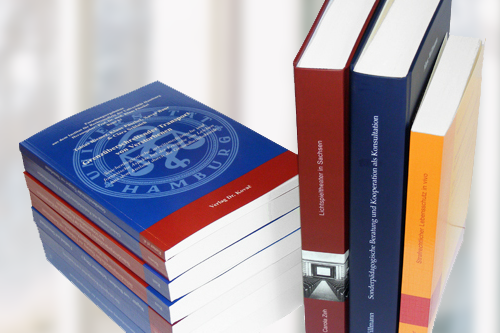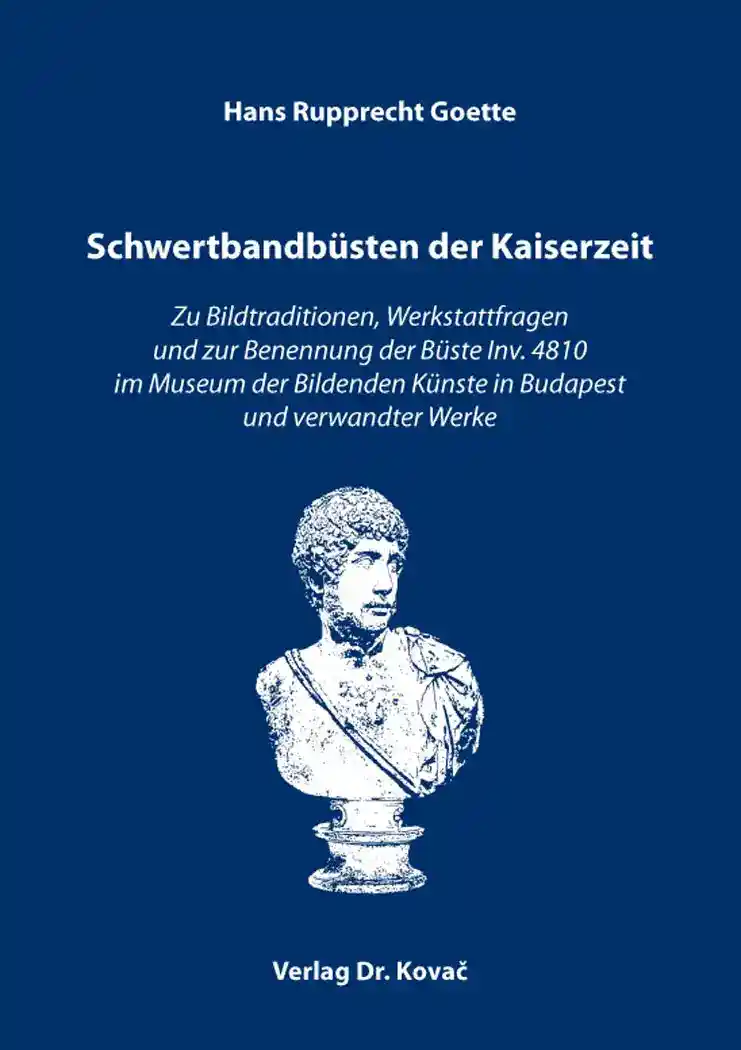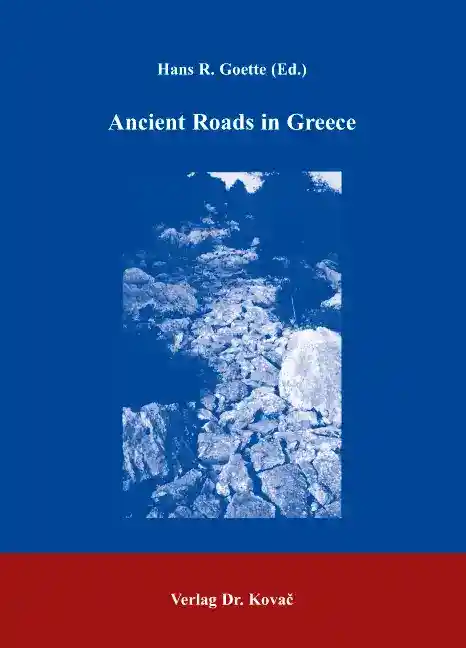Hans Rupprecht GoetteSchwertbandbüsten der Kaiserzeit
Zu Bildtraditionen, Werkstattfragen und zur Benennung der Büste Inv. 4810 im Museum der Bildenden Künste in Budapest und verwandter Werke
ANTIQUITATES – Archäologische Forschungsergebnisse, volume 77
Hamburg 2021, 134 pages
ISBN 978-3-339-12390-9 (print) |ISBN 978-3-339-12391-6 (eBook)
Rezensionen
[...] Ausgehend von der kopflosen Büste in Budapest zeigt die Analyse von Goette die facettenreiche und komplexe Grundlagenarbeit der fachgerechten Vorlage eines Einzelobjekts in seinem kulturhistorischen Kontext. Der umfangreiche Abbildungsteil (S. 59–124) rundet die Studie ab. Für die Bildnisse des Hadrian im Typus Delta Omikron wird der Beitrag von Goette die Diskussion zukünftig bereichern, wenngleich die Existenz des Typus weiterhin erklärungsbedürftig ist. Zu Recht spielen in der Untersuchung auch immer wieder Fragen der Provenienz, Werkstattzuweisungen und Materialanalysen eine Rolle, über die in der Summe fundierte Klassifizierungen als antik oder modern vorgenommen werden. Mit Spannung ist daher die Publikation zu den Skulpturen der Antikensammlung in Budapest zu erwarten.
Hans Rupprecht Goette is one of the ten classical archaeologists whose publications I most enjoy reading. One of the usual characteristics of his works is the suggestion of new ideas [...]. It is therefore easy to understand that the publication of his latest monograph is excellent news for everyone interested in the classical world.
[...]
Specialists in Roman Art have sometimes criticized the publication of books in a small format [...]. I have never understood that opinion. Good studies have been written in small books [...]. Goette’s monograph can now be added to those. This is justified not only by the relevance of his five key hypotheses but also by a sixth contribution of the study: new data in it allow a reappraisal of two classic issues of Hadrian’s images. [...]
About this book deutschenglish
A headless bust in the Museum of Fine Arts in Budapest, which has a paludamentum on the left shoulder and a baldric (made of two straps) across the chest, offers the starting point for a discussion of similar portrait busts of emperors and private portraits that employ military attributes.
The majority of such portraits sport a broad leather baldric, sometimes decorated. The baldric type with two narrow straps, which exists on only a few busts of the 2nd century AD, derives from Classical Athenian and Hellenistic funerary monuments. While the broad baldric is the more common form, the two-strap type appears on Attic grave reliefs depicting warriors, heroic images influenced by the iconography of the Athenian Demosion Sema.
This Attic tradition was taken up in the Hadrianic period when this special baldric was pictured on military portrait busts of the so-called ›Youthful‹ Hadrian. The essay continues with a study of the portrait type »Δο« of Hadrian, discussing a possible motive for its creation, its date and meaning, as well as questions about the Roman workshop that produced the type as indicated by analysis of the marble origin and technical details.
The essay concludes with a look at the many copies of this portrait type created from the 16th century on, specifically their identification and relationship to the ancient model. A long list of ancient monuments related to the themes of this study, as well as many photographs, support the text and assist in following the argument.
Keywords
Alte GeschichteArchäologieAthenAttische GrabreliefsBüstenHadrianKaiserzeitMilitärsRhodosRömische KaiserRömische PortraitsRomSchwertbandIhr Werk im Verlag Dr. Kovač

Möchten Sie Ihre wissenschaftliche Arbeit publizieren? Erfahren Sie mehr über unsere günstigen Konditionen und unseren Service für Autorinnen und Autoren.
Weiteres Buch des Autors
Proceedings of a Symposion Organized by the Cultural Association Aigeas (Athens) and the German Archaeological Institute (Athens) with the Support of the German School at Athens, November 23, 1998
Hamburg 2002, ISBN 978-3-8300-0444-8 (Print)

